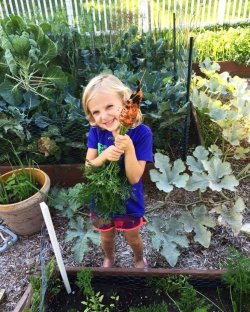How to Use Compost How Much Compost?
Compost for Sale!
Emmet County’s Homegrown Compost
- Get it at the Pleasantview Road Drop-off Center
7363 S. Pleasantview Road
east of Harbor Springs - Improve the texture and vitality of your soil
- Made from local yard and garden trimmings and food scraps
- Independent-laboratory Tested
2024 Testing Results PDF
using the U.S. Composting Council's Test Methods for the Examination of Composting and Compost
Prices
Bagged
Availability limited. $8 per bag (1.5 cubic feet) or 3 bags for $20
Bring-Your-Own Buckets (and shovel)
5 gallons for $4
Load-Your-Own
$30 per cubic yard
Bring your own shovel as ours frequently disappear.
We-Load
$40 per cubic yard
Loading available into open trucks or trailers only.
Volume Discount: Arrange with DPW Office
Purchases of 20 yards and up, $30 a cubic yard LOADED* + one time $10 loading fee
If you want the volume discount but cannot pick up all 20 yards in a day, please contact our office at 231-348-0640 to talk about our system for bulk customers picking up compost in multiple loads.
*Loading Disclaimer
While the Emmet County DPW staff people who load our products are trained loader operators and have an excellent record, our loading service is offered “at your own risk." Emmet County will be not be responsible for any alleged damage to vehicles.
Compost Use: Preparation and Application Rates

Filling Raised Beds
There are all kinds of “recipes” for raised bed fill available online: enough to make ones head spin! However many soil scientists say that, generally, a 50/50 mix of compost like Emmet County's Homegrown and mineral topsoil (not bagged “topsoil" products which are often made of composted wood and the like themselves) makes a good raised bed soil.
If considering using other sources of compost, it is important to note that some specially formulated composts (for example worm compost and Dairy Doo) require very different ratios: check the compost producer's information if using other sources of compost.
The following compost use guidelines are from “Composting for the Homeowner” from the University of Illinois Extension (resource suggested by Michigan State University)
New Vegetable or Flower Garden
- Prep: clear existing vegetation and roots of tough perennial weeds.
- Use Compost: cover the area with 3 to 4 inches of compost. Till it into the top 6 inches of the soil.
In Potting Mixes
- “Compost is excellent for container growing mixes, because it stores moisture effectively and provides a variety of nutrients not typically supplied in commercial fertilizers or soil-free potting mixes.”

- Use Compost: Use 25-50% compost by volume.
Mulching Existing Gardens
- Prep: remove weeds, making sure to remove the roots of tough perennial weeds.
- Use Compost: Cover the garden or bed with 1 to 2 inches of compost.
To Support Your Lawn
- Prep: If using home-made compost, screen out chunky materials. Aerating the sod before applying compost will help incorporate the compost.
- Use Compost: Apply 1/8 to 1/4 inch of compost. Rake it into the crevices.
When Planting Trees or Shrubs
- Prep: collect the soil from the hole to backfill around the root ball.

- Use Compost: Mix compost into the natural soil before back filling. Use up to 25% compost (by volume). Using more than 25% compost may discourage the plant from extending its roots beyond the amended soil in the hole.
When Feeding Existing Trees
- Prep: Drill 1- to 2-inch diameter holes 12 inches deep throughout the tree canopy and beyond at 18-inch spacing. Fill the bottom of each hole with dry fertilizer at recommended rates.
- Use Compost: Top off the holes with compost.
- This treatment should supply nutrients for 2 to 3 years.
When Feeding Existing Shrubs
- Prep: Drill 1- to 2-inch diameter holes 8-10 inches deep throughout the tree canopy and beyond at 18-inch spacing. Fill the bottom of each hole with dry fertilizer at recommended rates.
- Use Compost: Top off the holes with compost.
- This treatment should supply nutrients for 2 to 3 years.
Want to make your own compost?
Click here for our guide: Home Composting for You
How many yards do I need to apply for compost or mulch X inches thick?
How We Measure Truck Bed Yardage
Length x Width x Height divided by 27 (LxWxH)/27
An average truck bed is about 2 yards if filled, but not over the edges of the bed.

